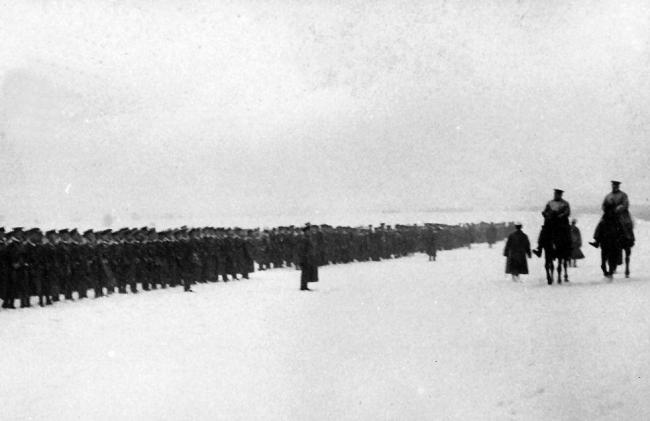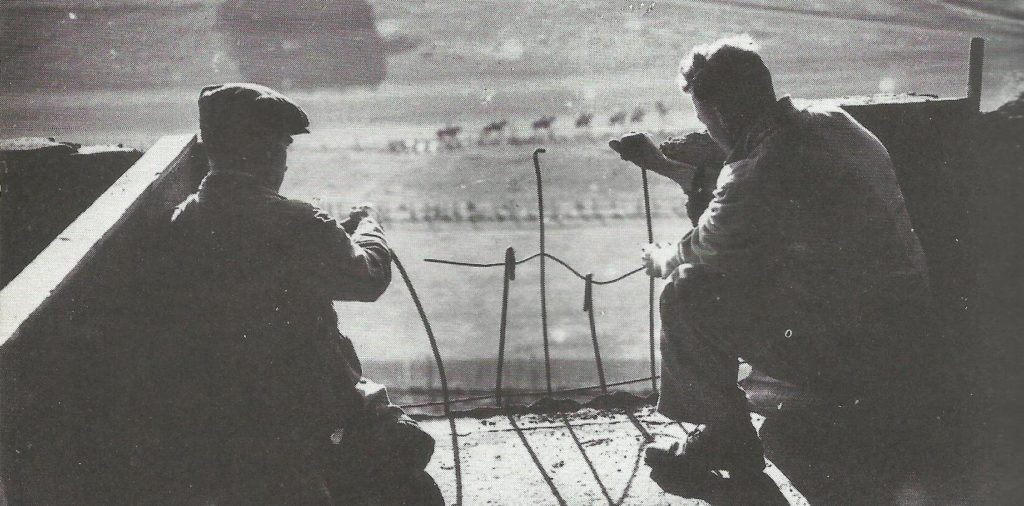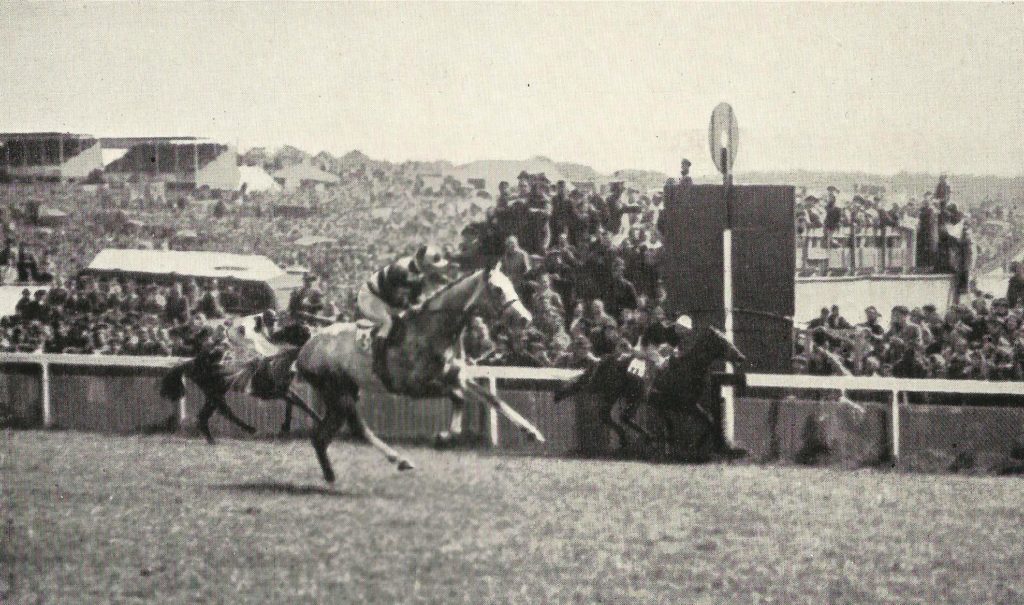Epsom Downs in Wartime
Throughout the First World War 1914-1918, Epsom Racecourse made an important contribution on the home front. There was a military encampment on the Downs, while both grandstands were used as hospitals.
Famously, on 22 January 1915, on a snow covered Epsom Downs in blizzard conditions, Lord Kitchener held an inspection of 20,000 volunteers from the 2nd London Division, before they marched off to the Western Front.

Meanwhile, to safeguard the continuity of the Derby and Oaks, the races were run at Newmarket from 1915-1918, until racing resumed at Epsom for the Spring Meeting in 1919.
Twenty-one years of peace followed until on 3rd September, 1939, at 11.15 a.m. Prime Minister, Neville Chamberlain, broadcast to the nation the following statement.
“This morning the British Ambassador in Berlin handed the German Government a final note stating that, unless we heard from them by 11 o’clock that they were prepared at once to withdraw their troops from Poland, a state of war would exist between us.
I have to tell you now, that no such undertaking has been received, and that consequently this country is at war with Germany.”
To begin with there were little signs of disruption, however, by the end of 1939, Epsom was commandeered by the Army and the following January, its race meetings were abandoned until further notice.
There were plans to hold the Epsom Classics at Newbury, but these too were abandoned after strong opposition from the local council. Eventually, the meeting was transferred to the Summer Course at Newmarket, where over the 12 & 13 of June 1940, they were run as the New Derby Stakes and the New Oaks Stakes, as previously titled throughout the First World War.
In 1941 a Home Guard training school was set up in the Grandstand. Notably, on one occasion 5,000 Home Guard from the South-West London area participated in a “tank battle” on Epsom Downs where the Royal Tank Corps played the part of the enemy.
In a shift of public attitude, to contrast with the moral indignation raised against racing during the First World War, the ‘never say die’ spirit of the public travelled with or without petrol coupons, to the 1940 Derby, only days after the evacuation of Dunkirk. Two years later, setting the seal of approval, King George VI won four of the five Classics, only missing out with Big Game in the Derby, when attending with Queen Elizabeth.
Meanwhile at Epsom, the military moved into the Prince’s Stand using it as the Officers Mess. Although, not every battle was lost, for in 1943, after a prolonged dispute between the Epsom Grand Stand Association and the nation’s food producers, the Surrey War Agricultural Committee announced its decision to forego their claim to plough up the gallops.
In September 1943, an Avro Anson, a twin-engined plane used for training, crash-landed on the finishing straight of the racecourse. Having suffered engine failure and due to the camber towards the rails, the plane drifted to the left and collided with the railings approaching the finishing post.

The racecourse, however, was affected by bombing. Parts of the Grandstand were damaged and there were craters in the enclosures. Nevertheless, everything was patched up in time and the pre-war carnival spirit was in evidence for the first post-war Derby on Wednesday, 5 June 1946.
On a day more like January than June, it was reported that 250,000 people attended. For the first time, the Royal family, including the King and Queen, Queen Mary and Princess Elizabeth, drove down the course from Tattenham Corner, whereupon, as if by Royal appointment, the sun came out.
The winner, Airborne, only the fourth grey to do so, started at 50-1 and appropriately, was backed by the mothers, wives and sweethearts of those in the service.
